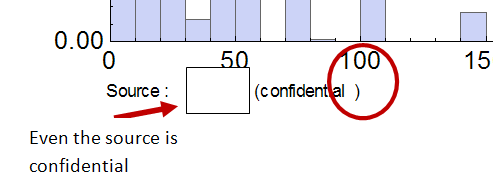A lot of my work involves manipulating data, drawing a pretty plot of it and then inserting that graphic into a report written in Microsoft Word, under Windows.1 The fun comes with the exporting part. If the audience don't have the Mathematica fonts installed, negative signs, parentheses etc will come up as missing-characters in the WMF graphic and in Word.
You can fix this using the PrivateFontOptions option, either in the notebook or in the Options Inspector.
SetOptions[$FrontEnd, PrivateFontOptions -> {"OperatorSubstitution" -> False}]
But I still find the output a bit disappointing, in that the spacing around parentheses and other characters in the WMF file looks wrong (sorry, I can't show the whole graphic because the data are confidential).

The code to produce the graph above rests partly on a package, so here is a minimal example:
test = Grid[{{DisplayForm[
AdjustmentBox[
Style["Source: REDACTED (confidential)", 13,
FontFamily -> "Arial", Black],
BoxMargins -> {{3, 0}, {0, 0}}]]}}]

This is how it looks in Win7 and Office 2010: the first two are with operator substitution ON, the second pair are with operator substitution OFF. There is still a bit too much space but it is better than in Word 2007.

As highlighted, there is just too much space between the text and the closing parenthesis. This is not apparent in the Mathematica notebook, where it looks just fine. It must be something to do with Mathematica's WMF export routine: other applications with WMF export don't do this.
Is there any way of automatically ensuring that the spacing around letters in the resulting WMF file is a bit more acceptable? Some kind of auto-kerning option? Ideally it should be something I can set in a package so my colleagues don't have to know the internals of how to do it.
1Actually I have people to do that now, but you get the idea.



 .
.
SetOptionsconstruction is wrong. It should be eitherSetOptions[$FrontEnd, PrivateFontOptions -> Append[DeleteCases[ PrivateFontOptions /. Options[$FrontEnd, PrivateFontOptions], _[ "OperatorSubstitution", _]], "OperatorSubstitution" -> False]]or shorterCurrentValue[$FrontEnd, {PrivateFontOptions, "OperatorSubstitution"}] = False$\endgroup$PrivateFontOptions. Apparently it doesn't. Anyway, $FrontEnd should have been included. $\endgroup$